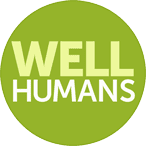 Food fermentation has been around for thousands of years, from back when technologies like refrigerators were not yet a thing. Fermentation is a process of preserving foods to extend their shelf life and avoid wastage. It is done by adding live bacteria or yeast, which transforms carbs into alcohol or acids that act as natural preservatives.
Food fermentation has been around for thousands of years, from back when technologies like refrigerators were not yet a thing. Fermentation is a process of preserving foods to extend their shelf life and avoid wastage. It is done by adding live bacteria or yeast, which transforms carbs into alcohol or acids that act as natural preservatives.
In recent years, fermented foods have gained increased popularity as gut health has been brought into greater public awareness. Many diseases have been found to have a link to gut health, which opens the topic of how to keep the gut healthy to fight off such illnesses. Fermented foods contain probiotics, which are good microbes that help restore the balance of bacteria in the gut.
Due to different factors, the diversity of gut bacteria can be compromised. These factors include a poor diet, unhealthy lifestyle, lack of exercise, and environmental factors. When the bacteria exist in incorrect ratios, the gut cannot function as it should. Functions such as proper digestion and optimal immune response will be adversely affected.
So, what do you do? There are different ways to keep your gut healthy and to restore the balance of the gut microbes, one of which is through the help of fermented foods.
Below are some examples of fermented foods that you may want to include in your diet to help keep your gut healthy:
Kimchi
Kimchi is a staple side dish in Korea. It is rich in probiotics and fiber. Kimchi is fermented cabbage made spicy by gochujang or Korean chili paste. You can find a jar of kimchi in the Asian ingredients section in the groceries. Of course, you can also make it yourself.
Sauerkraut
If you’re not fond of spicy foods, then sauerkraut is a better option than kimchi. Sauerkraut is also cabbage and salt, and you probably know this German superfood as a topping on a hotdog.
Kombucha
If you’re a tea lover, your gut is already enjoying its benefits. Well, you can take your tea up a notch with kombucha, which is a fermented green or black tea, with herbs or fruits for added flavor. You can find kombucha tea at your local grocery stores.
Yogurt
Yogurt is fermented milk containing millions of probiotic microbes. Some yogurts, however, have gone through pasteurization that might have killed most of the good bacteria. So, make sure that you look at the label and choose the ones that say “cultured” or “live bacteria.”
Miso
Miso is fermented barley, rice, or soybean paste, which you may most likely recognize in Japanese soups. It is a staple ingredient in many Japanese and Chinese foods, given the zest that it brings to almost any dish. It contains millions of bacteria that have digestive health benefits.
Pickled vegetables
Pickled vegetables are a good way to get started with fermented foods if you haven’t been eating them already. They are often made from carrots, cauliflowers, celery, cucumber, and cabbage, with small hot chilis and bay leaf to taste. They are fermented with salt, water, and vinegar.
Start by adding these probiotic foods slowly. As they repopulate your gut with healthy bacteria you may experience additional gas or bloating initially. If you try adding fermented foods to your diet and end up feeling much worse, it might mean you have an underlying Candida overgrowth. That would be a reason to investigate further with testing and eliminate the candida before trying fermented foods again.





